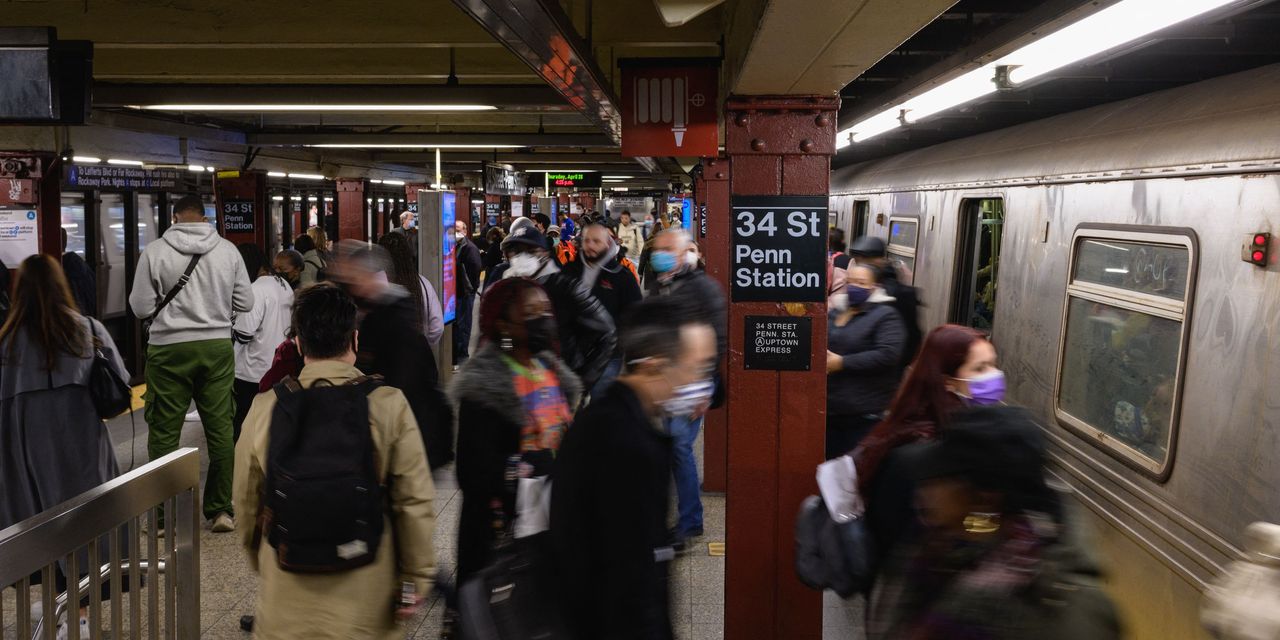The U.S. economy added 209,000 jobs in June, a healthy number that surpassed some forecasts but fell short of the surge reported for May. Don’t expect the slowdown to prompt the Federal Reserve to hit the brakes on a July rate hike.
The surge represented far smaller employment growth than the nearly half million jobs reported by ADP on Thursday, giving the Federal Reserve a bit of breathing room as the central bank weighs the scope of additional rate increases needed to help bring down inflation.
The difference between the two job growth estimates is likely due to seasonal adjustment methodology, according to Vanguard’s economists Joe Davis and Andrew Patterson. ADP’s methodology likely placed an “upward bias” on the June payroll gains, they wrote, adding that a similar divergence occurred in 2022.
The unemployment rate remained relatively unchanged at 3.6% in June, in line with forecasts, but down slightly from the 3.7% recorded in May. Since March 2022, the unemployment rate has ranged from 3.4% to 3.7%, according to the BLS.
During the first half of 2023, the U.S. has gained a monthly average of 278,000 per month, according to the BLS. Earlier in the year, the BLS repeatedly revised the jobs figures upwards. But on Friday, the payroll number for May was revised down by 33,000, from 339,000 to 306,000. Collectively in April and May, job gains were 110,000 lower than previously reported.
June is traditionally a big month for hiring with summer jobs and an influx of college graduates entering the workforce. Those trends, paired with the recent boom in travel and hospitality, along with an upswing in consumer confidence, mean June could have been a blowout month for hiring, wrote Julia Pollak,
ZipRecruiter’s
chief economist. “Instead, it showed signs of the labor market cooling—perhaps the result of the Fed’s rate hikes finally biting,” she added.
Yet the addition of 209,000 jobs is nothing to scoff at. The labor market is still running more warm than cool—June’s jobs data is still well above the baseline standards of a tight labor market—and it builds the case for Fed officials to press the play button and again increase rates in July. On Friday, the likelihood that the Fed would raise rates during the upcoming July stood at 94.9%, according to the CME FedWatch tool.
Because the Fed has made cooling off the labor market a “linchpin” of its inflation fight, one month of more favorable data is likely not enough to sway the central bank one way or another on rate increases, wrote Mike Loewengart, head of model portfolio construction with Morgan Stanley Global Investment Office. “The Fed will likely want to see evidence that today’s data is part of a trend, not just a one-off, before they back off from their hawkish stance.”
Overall, Friday’s job report reflected a cooling, yet fairly strong labor market, which will likely frustrate those who have expected a recession. Although many predicted an economic downturn this year, the high level of employed Americans should keep consumer spending relatively stable.
Wage growth, another measure the Fed is watching closely, presented a slightly more complicated picture in June. The average hourly earnings for private, nonfarm workers hit $33.58 in June, up 0.4% from May, according to Friday’s report. Although that represents a significant slowdown from the post-pandemic peak of 5.8% in April 2022, average hourly earnings have grown 4.4% over the past year—indicating a “hot labor market,” wrote Jeffrey Roach, chief economist for LPL Financial. “Businesses appear desperate to attract and retain workers.”
Beyond the bump in pay growth, the total hours worked also ticked up in June. More hours worked at higher average wages means workers’ overall income rose last month, another sign consumer spending could continue to be strong this summer.
Overall, the labor force participation rate was 62.6% in June, unchanged from May, but below prepandemic rates—even though the labor market arguably is tighter now than it was then. The number of Americans working part-time, but who would prefer full-time positions, increased by nearly half a million in June, reflecting an “increase in the number of persons whose hours were cut due to slack work or business conditions,” wrote the BLS.
Interestingly, when looking at the job gains sector by sector, interest-rate sensitive industries like construction and manufacturing aren’t seeing any slowdown yet. The construction sector actually added 23,000 jobs in June, while manufacturing gained 7,000.
The biggest employment gains, however, were in the government sector, accounting for an added 60,000 jobs, likely a result of fewer teacher layoffs and hiring by local governments for infrastructure projects. Health care added 41,000 jobs while the social assistance sector gained 24,000, both due largely to hiring at hospitals, nursing homes, and other related health services.
The fact that the headline jobs number is coming down is meaningful, but with an economy that has proven remarkably resilient and incomes remaining buoyant, the Fed still has work to do.
Write to Megan Leonhardt at [email protected]
Read the full article here













